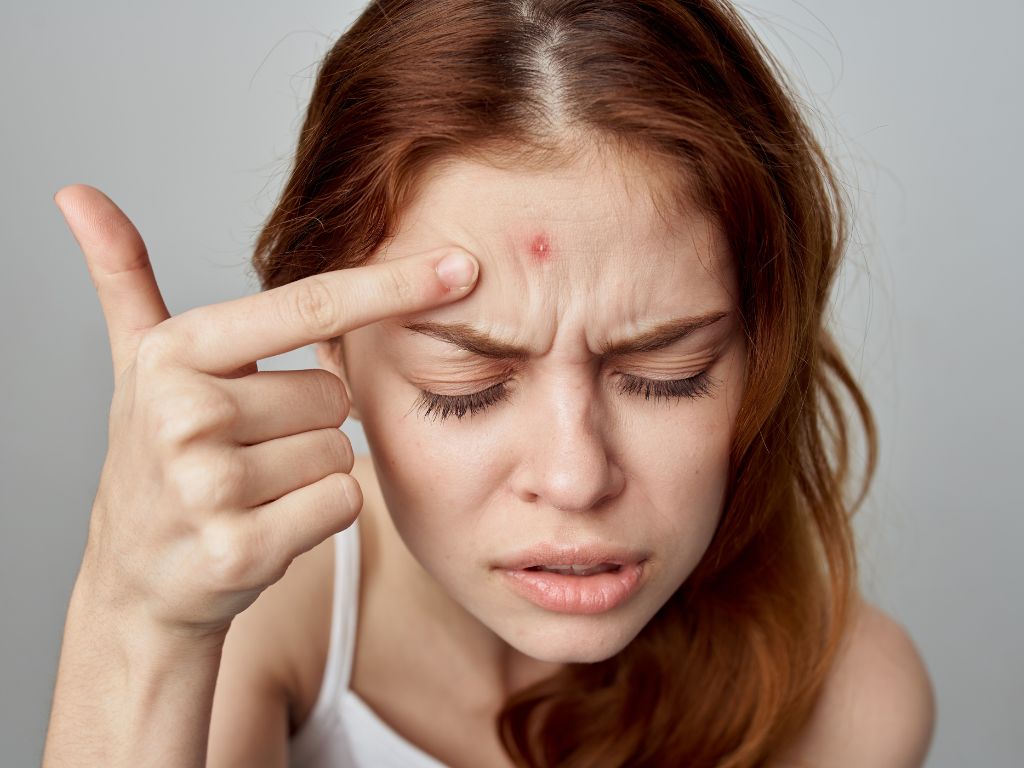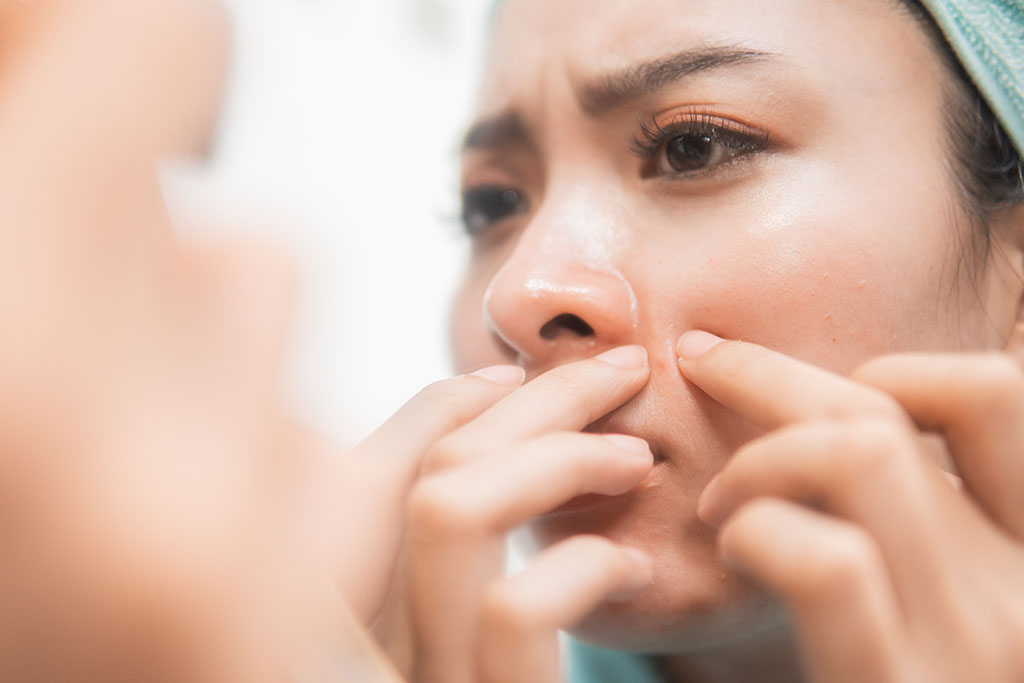
Acne scar is a common concern.
We see many patients for consult on their acne scars at our clinic. Often, they are overwhelmed with the choices available and are unsure which treatment works best for their type of scars. In this article, we will discuss with you the different types of acne scars and what are the available treatments for each type.
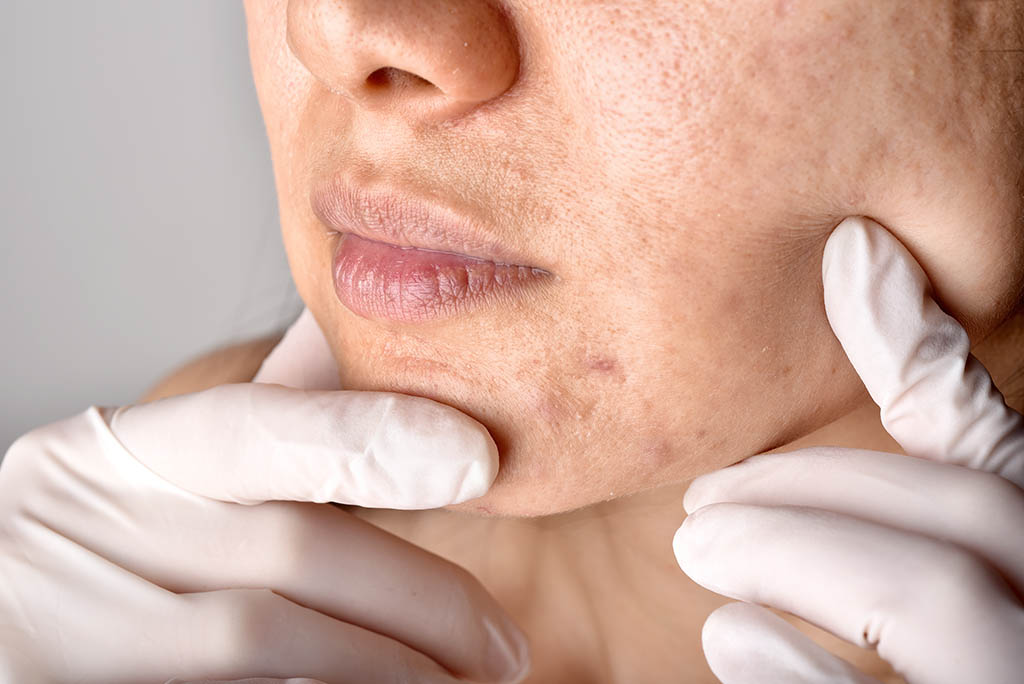
Assessment of acne scars
Scar assessment is the first step to treatment
Acne scar treatments are commonly requested. However, there is no one size fits all approach and results will vary for different patients, as with all aesthetics treatment. So, your doctor should first assess the type of scars that you are having, discuss the various options and then propose a suitable treatment plan for you.
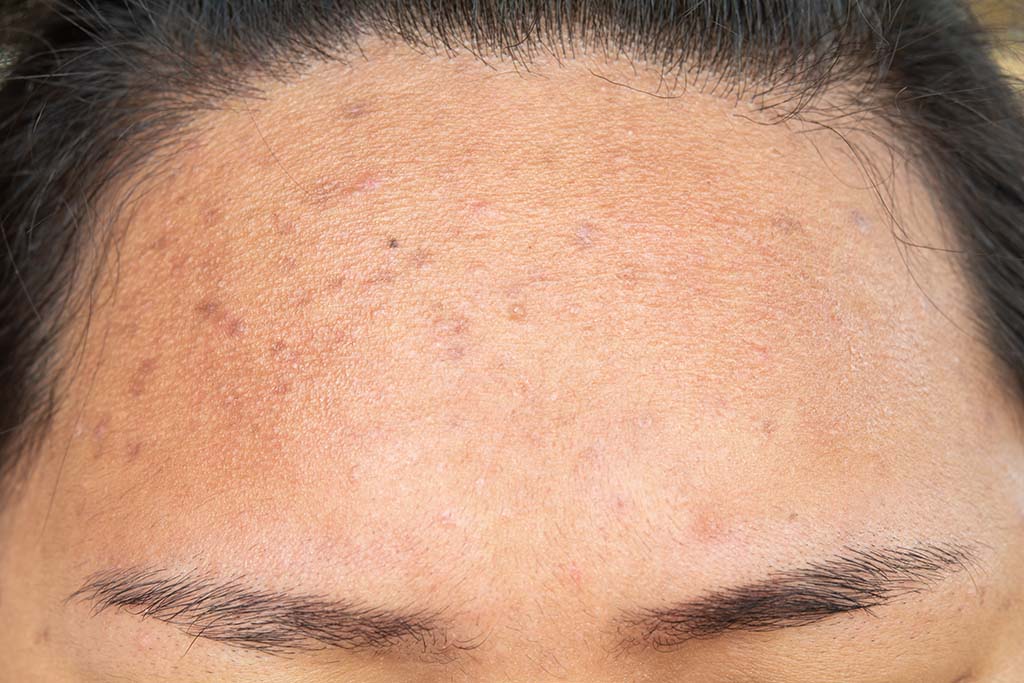
Reddish brown scars on a patient’s forehead
Some acne scars have good recovery.
For many patients, the most common type of acne scars after a breakout are the reddish-brown marks left on the skin. These scars are commonly known as post-inflammatory hyperpigmentation. Usually, these marks will fade on its own with time. The use of lightening creams, chemical peels, lasers and good sun protection will help to speed up its healing. If you are having such scars, your chance to recovery is fairly good.

Atrophic and hypertrophic scars
What are dented acne scars?
We have another type of scars known as atrophic scars. These appear as dented scars as a result of fibrous scar tissue pulling down the skin. Medical doctors often describe these scars such as ice-pick, box or rolled scars. In the past, we used a combination of subcision to release the scar tissue and resurfacing lasers to stimulate secondary skin healing. These procedures often carries the risks of bruising, scabs and skin peeling.
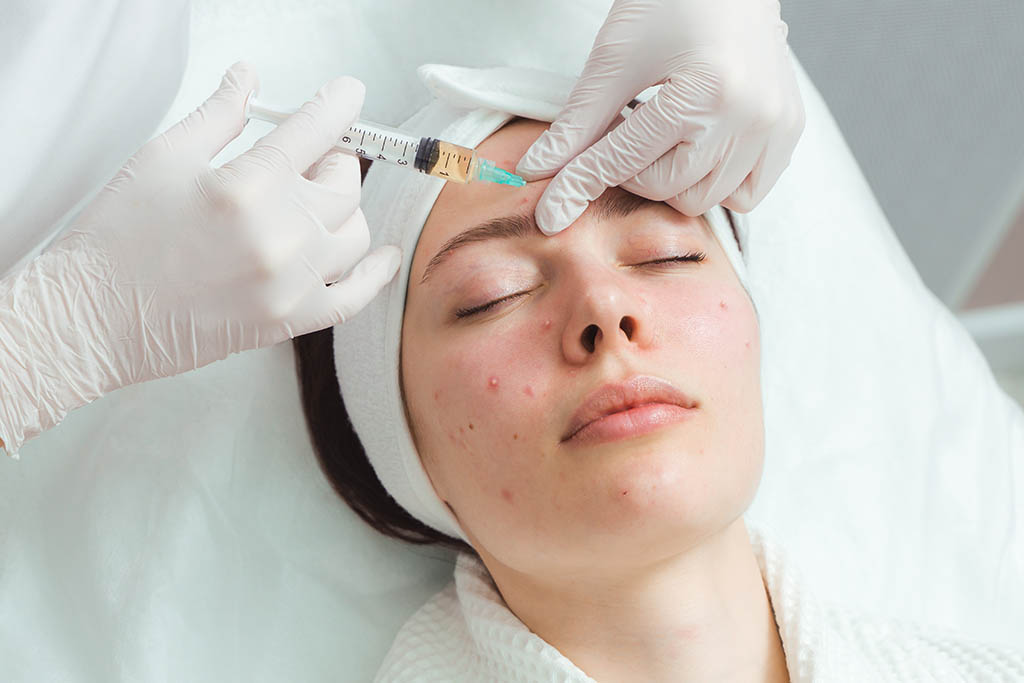
Injecting into dented scars to fill them up
Newer scar treatments are now available.
In recent years, newer scar treatments have evolved. Now, we combine subcision with injectables such as Rejuran Scar or HA Biostimulator to fill in the dented scar. Radiofrequency micro-needling helps with skin resurfacing to achieve scar revision. Unlike traditional micro-needling, there is minimal or no skin bleeding. And skin heals fairly quickly and results are satisfactory.
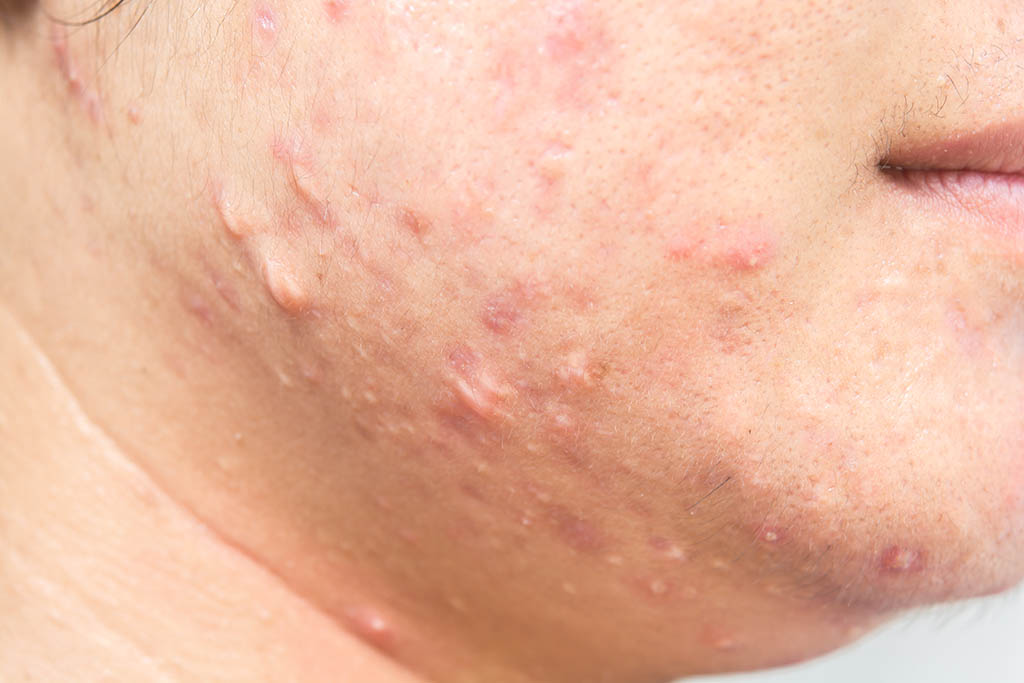
Hypertrophic scars on jawline
Raised scars can also be treated.
We also have a small group of patients who suffer from hypertrophic scars. Often, these appear as thick raised scars due to an abnormal response to wound healing. We often combine treatment of such raised scars using steroid injection to reduce its size and laser resurfacing to remodel the skin. In most cases, multiple sessions are necessary to see progress in scar improvement.
Watch our video on Fractional Skin Resurfacing.
Call us now to find out how we can help you with treating your acne scars.


